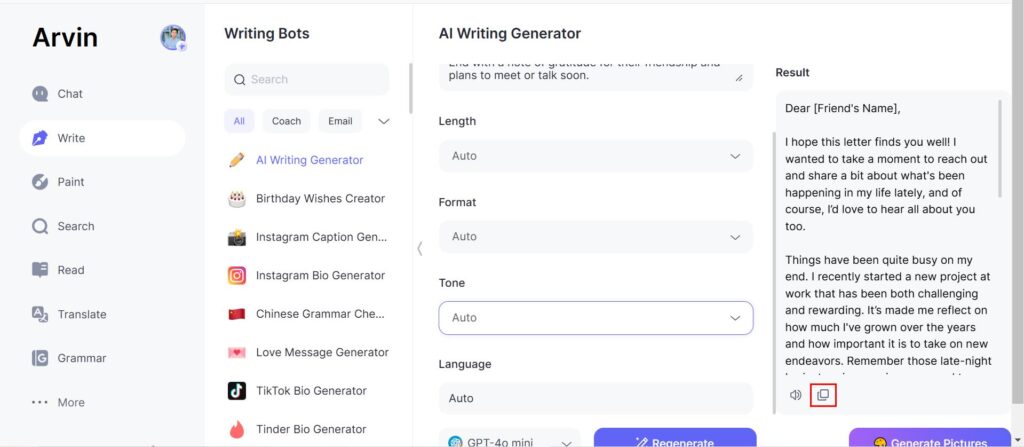Letter writing is an important form of communication, be it personal, professional, or academic. The emergence of digital ways of communication through emails and messaging apps has not yet lessened the importance of letter writing. Letters bear a sense of formality and thoughtfulness that might not be conveyed by other means of communication. Moreover, letters are considered one of the most personal and meaningful ways to express your emotions or any official issues. This article will explain in detail on how to write a letter effectively, which should be clear, tactful, and well-structured to ensure that a message is properly conveyed for any occasion.
Types of Letters
Letters serve varied purposes and occur in many different formats. Each of the different types of letters has specific expectations for both form and content. Here’s a summary of some of the most common types of letters.
Personal Letters
Personal letters are informal and are meant for friendly or family correspondence. These range from heartfelt notes to life event updates. In a personal how to write a letter, one has the leeway to become relaxed and conversational. You can share your thoughts, feelings, love letter and life updates with loved ones, whether it’s to catch up or to express appreciation.
Business Letters
Business letters are formal letters applied in the workplace. They usually have a more rigid structure and tone in order to convey professionalism, respect, and clarity. Business letters are used for communicating with someone regarding a job or for making requests or bringing concerns to the workplace. They are direct, yet polite, and often are used to establish or continue professional relationships.
Official Letters
Formal letters are used to cover organizations, institutions, or the government. These letters are capable of being bad or even very bad; therefore, they call for proper grammar and a lack of errors. Officially constituted letters demand clear, well-organized, and rigorously detailed writing. They can include complaints, requests, and formal notifications.
Informal Letters
Informal letters are semi-formal and come between personal and business correspondence. Though they are not as formal, they would still carry a certain sense of professionalism, particularly in professional situations or with an acquaintance. These how to write a letter can use friendly words, but should remain formal in tone. They deal with persons with whom one has a less personal association, yet requires politeness and professionalism.
2. Structure of a Letter
The structure of a letter is different, with regard to its purpose and formality. Most letters, however, possess a similar structure that allows them to be well-organized and clear.
Heading: Address, Date, and Recipient Details
The heading includes the information the recipient must know to identify the source of the how to write a letter and contextualize the letter. Business and official letters take the address of the sender at the left top, followed by the date, then the recipient’s name and address.
- Sender’s Address: Address of sender or company letterhead goes first.
- Date: After the heading is the date the letter is written. In formal letters, this should be in full; for example, December 7, 2024.
- Recipient’s Address: The date is followed by the name and address of the recipient, usually aligned to the left.
Salutation: Proper Greetings
The salutation is the manner in which you address your recipient at the beginning of your letter. The tone of your salutation will depend upon the formality of the letter.
- Formal Salutations: “Dear Mr. Smith,” “To Whom It May Concern or Dear Sir/Madam” are common formal greetings.
- Informal Salutations: “Hello,” “Hi [Name],” or just the name of the addressee will suffice for letters that are less formal.
Body of the Letter
Introduction: Purpose of the Letter
Introduction: This is a brief explanation of the purpose of the letter, providing a clear reason for writing. It should be brief and to the point, especially in formal letters.
Main Content: Details, Requests, or Information
Body: This is the main message of the letter. For personal letters, this would include sharing experiences or emotions. In business and official how to write a letter, this section can be used to outline requests, information, or responses to prior correspondence. Clarity and brevity are vital in this section.
Conclusion: Summing Up the Message
Conclusion The conclusion is where you wrap up the how to write a letter. This may include a call to action, such as requesting a response, or a note of thanks and anticipation of future correspondence.
Closing: Respectful Sign-Offs
The closing is the final formal complement of the how to write a letter, and it says a lot about the relationships and your attitude. The sign-off should match the tone of the letter.
- Formal Closings: “Sincerely,” “Yours truly,” “Respectfully,” or “Best regards.”
- Informal Closings: “Best,” “Take care,” or “Cheers.”
Signature: Handwritten vs. Digital Signatures
After the closing, the signature is placed. In formal letters, the signature is typically handwritten. However, in the digital age, many formal letters are signed digitally, especially in email correspondence.
- Handwritten Signatures: Common for physical how to write a letter and maintains a personal touch.
- Digital Signatures: Often used in emails or for business correspondence, digital signatures offer convenience and efficiency.
Writing Tips for Different Types of Letters
How to write a letter? Writing letters is an important skill to have, whether you are writing a personal note to a friend or a formal letter to a potential employer. In each of these cases, a different approach should be taken to make the letter serve its purpose in the best way possible. The following are detailed tips on how to write personal, business, formal, and informal letters.
How to Write Personal Letters
Letters can be personal to loved ones, family, and friends; personal letters may hold a tone of closeness and emotions. Writing a personal good letter example; emotional connecting with the reader is to be meant the most. Be sincere, expressive, open about your thoughts or feelings.
- Tone: The tone of a personal letter needs to be warm, friendly, and reflect your relationship with the recipient. It should be casual in tone and avoid too much formality in phrasing. Show care and affection, which would sound more realistic in a letter.
- Personal Connect: Personal letters thrive on shared connections. Reference shared memories, personal experiences, or inside jokes to strengthen bonds. This will make the how to write a letter feel more personal and adapted toward the reader.
- Express Yourself Emotionally: There is no need to shun your emotions. By sharing good news, sympathizing, or showing your gratitude, you can deepen connections with the reader.
How to Write Business Letters
Business letters are usually written on occasions dealing with a company, colleague, or client. These letters need to communicate the message clearly and have to maintain professionalism. Thereby, professionalism can be observed when writing a business letter. Use only formal language. Never use slang and colloquial expressions in this type of how to write a letter.
- Professionalism: Professionalism should be maintained with regards to the salutation, body, and closing; for example, “Dear [Name]” and “Sincerely.”.
- Clarity: Be clear-cut and to the point. There should not be a need for the reader to make out or guess your message. Ensure each paragraph says something and avoid unnecessary difficulty.
- Conciseness: Letters of business get down to business. Avoid lengthy descriptions or filler content. When necessary, use bulleted items or numbered lists to make your message even clearer.
How to Write Formal Letters
Formal letters are written for official or serious purposes, such as job applications, complaint letters, or cover letters. This type of writing requires a more structured and respectful approach.
- Formal Language: Formal letters require a more reserved tone. Use appropriate titles (Mr., Mrs., Dr.) and complete sentences. Words like “Please accept this letter as” or “I am writing to inform you” convey respect and professionalism.
- Precision: Be precise in the language. Avoid vague sayings and unnecessary elaborations. Keep the purpose of the how to write a letter in mind and express your argument, request, or statement in a tabular form.
- Diplomacy: In formal letters, especially in dealing with complaints or issues, one needs to be diplomatic. One should use courtesy expressions and tactful sayings, even when there is a problem or concern being addressed.
How to Write Informal Letters
Informal letters are typically written to friends, acquaintances, or family members. While these letters are more relaxed in tone, they still require respect and appropriate structure.
- Tone: The tone should be friendly, warm, and casual. You are free to use slang, humor, and colloquialisms, depending on the recipient. However, remember that even informal letters should show respect.
- Respect and Boundaries: While the letter is informal, still pay respect to boundaries. Avoid too-personal subjects unless you’re sure the recipient is ready for them.
- Informal Structure: There is no need to follow any strict format in informal letters. You can write in a flowing, conversational style. While there is no need to follow a formal structure, do start with a friendly greeting (“Hi [Name]”) and close with a warm sign-off (“Take care” or “Best wishes”).
Common Mistakes in Letter Writing
While how to write a letter, some mistakes can reduce the effectiveness of your write-up. Following are some of the most common issues faced by people while writing different types of letters.
Excessive Use of Jargon and Difficult Words
Business or formal letters often contain jargon or heavy-sounding words to make their tone professional. But it is not wise to do so, as it will make things difficult for the reader to understand. A balance must be maintained between professionalism and simplicity. Choose clear, concise, and understandable language to put your point across effectively.
Incorrect Formatting: Alignment Issues, Missing Details
Letter formatting is crucial for readability and professionalism. Alignment issues can make a letter look disorganized and difficult to follow. Common mistakes include not aligning the text properly, leaving out addresses or dates, or using inconsistent margins. Ensure that your how to write a letter follows the standard format for the type of letter you’re writing, including a correct heading, salutation, body paragraphs, and closing.
Tone Confusion: Switching Between Formal and Informal Tones
Changing tones from formal to informal in the letter may confuse the reader and nullify your message. This is very essential, especially in business and formal letters, where the tone is everything. Know your audience and the purpose of your letter.
Poor Grammar and Spelling Errors
Grammar and spelling mistakes can really take a toll on the professionalism of any letter. A business letter or formal letter with poor grammar may make you appear careless or inattentive, which may harm your reputation. Always proofread your how to write a letter for errors, especially in professional correspondence. Tools like grammar checkers can be a helpful aid in spotting mistakes.
Lack of Clarity: Writing Unclear or Ambiguous Content
A letter should clearly convey its message. If your content is vague or ambiguous, the recipient may not understand your intention. Avoid lengthy sentences that confuse the message or use convoluted phrasing. Instead, focus on delivering your message in a straightforward and understandable manner. Be specific about your intentions and avoid leaving room for misinterpretation.
Step-by-Step Guide to Writing a Letter
Writing a letter is either a formal or informal way of communicating your thoughts, emotions, or information to someone. A well-written letter, whether it is business or personal, is a skill that can be impactful. Here’s a step-by-step guide to help you write a clear and effective letter.
Step 1: Define the Purpose of Your Letter
The first thing you do when how to write a letter is to determine its purpose. Are you writing to express gratitude, request information, Christmas letter or to do an important announcement? Knowing the goal of your letter will keep you focused and organized throughout the process of writing it.
Step 2: Determine the Type of Letter (Personal, Business, Etc.)
The type of letter you are writing will influence its tone, structure, and language. There are two broad categories: personal and business letters. Personal letters are informal and may be written to friends, family, or acquaintances, while business letters follow a more formal structure and are typically used for professional correspondence.
Step 3: Organize Your Ideas (Outline or Bullet Points)
After having an idea of the intent and nature of the letter, you organize your ideas in either an outline format or in some other note-taking format to indicate what you wish to say. This way, you can keep the how to write a letter focused on the clear presentation of the message. Let’s say you want to write a complaint letter: jot down all the complaints with dates, facts that relate to those complaints.
Step 4: Start with Formal Greeting (Where Relevant)
The greeting defines the tone of your letter. For formal letters, use formal greetings like “Dear Mr. Smith” or “To Whom It May Concern.” For informal letters, there is a bit more freedom, and “Hi Sarah” or “Hello John” is sufficient. While business letters demand the inclusion of the recipient’s full name or title, personal letters allow more casual ways.
Step 5: Body with Clarity and Conciseness
The body is where you express your main message. Be clear and concise, whether you are requesting, providing information, or explaining. Do not include any details that are not needed and avoid complicated sentences. Remain focused on the key points and break your paragraphs into smaller, more readable sizes.
Step 6: Close Your Letter Appropriately
The closing of your letter wraps up your message. If your how to write a letter is formal, phrases like “Sincerely,” “Best regards,” or “Yours faithfully” are appropriate. For personal letters, closings like “Love,” “Warmly,” or “Best wishes” are more common. Make sure the tone of your closing aligns with the overall tone of the letter.
Step 7: Edit for Grammar, Spelling, and Tone
Before sending your letter, it’s crucial to revise it for grammar and spelling mistakes. Errors can undermine the effectiveness of your communication. Check for clarity, ensure that your tone is consistent throughout the letter, and verify that your letter conveys the right emotions (whether formal, friendly, or apologetic). Read through your letter aloud to catch any awkward phrasing.
Step 8: Address and Send the Letter
Last but not least, make sure your letter is addressed to the correct person. For business, be sure to have full name and title of your target if available. For physical letter-sending, make certain the address is correct; in the case of e-mail, recheck for correctness before sending. That and you are ready to let the letter go and successfully relay your message.
How to Write a Letter Using Arvin AI
Arvin AI is a strong tool that simplifies the letter-writing process by leveraging artificial intelligence in generating high-quality, well-structured letters. Be it a personal note or a formal business letter, Arvin AI will help you get the perfect message across with ease. Arvin AI is designed to help users in every manner possible for AI writing tool with ease. In its simple way, through the advanced use of AI algorithms, it generates content provided through users and makes the working of writing letters faster and time-efficient.
Key Features of Arvin AI
- AI-Powered Letter Writing Assistance: Arvin AI applies the latest principles in machine learning to deliver the output of high-quality content with your input.
- Customizable Templates: The software features templates for letters, inclusive of personal, business, formal, and informal occasion requirements.
- Grammar and Tone Adjustments: Arvin AI uses built-in grammar and tone checking.
- Personalized Suggestions: Not limited to grammar, the AI also makes suggestions concerning style, tone, and structure to fit the particular context of your letter.
- Multilingual Support: The support for writing letters in multiple languages helps users create content for a wide variety of audiences.
- Cloud-Based: Since Arvin AI is based on the cloud, you are able to access your work on any device with access to the internet.
Steps to Using Arvin AI
Step 1: Sign Up / Login to Your Arvin AI Account: First, visit the Arvin AI website and sign up for a new account or log into your existing one. This allows you to access all the features of the platform.

Step 2: Fill in the Key Information: Provide the necessary details regarding the purpose of your letter. This includes information about the recipient, the main message of the letter, and any other information that might be necessary, such as dates or events.

Step 3: Adapt the Template if Necessary: Once you have selected a template, you are able to adjust the tone, style, and structure to suit your needs. Arvin AI allows you to easily edit the content so that the letter best suits your personal preference.

Step 4: Review and Edit: Once the AI has generated your letter, go over it for accuracy, tone, and overall structure. Use the editing tools to fine-tune your letter to meet your objectives.
Step 5: Copy or Send: You can either download your letter to your computer or send it straight from the Arvin AI platform once you’ve finalized your letter. It’s done to make this process as smooth as possible.

Letter Writing for Specific Purposes
Letter writing is an important communication skill whether in professional or personal contexts. Below are tips on how to write letters for specific purposes.
Writing Job Application Letters
Application letters are often the first impression a potential employer has of you. Tailoring it to the specific job will help you stand out. A generic cover letter often doesn’t make an impact, so it’s crucial to address the job description specifically. Start by researching the company’s values, culture, and the role you’re applying for.
Writing Complaint Letters
When writing a complaint letter, it is important to be professional, even if you are addressing an issue that is frustrating you. Begin by stating the problem in a calm and factual manner. Avoid using emotional language and focus on the facts. Make sure your tone remains polite but firm, and clearly outline the issue you are experiencing.
Offering Solutions or Requests for Action
While the letter of complaint should detail the problem, it’s vital to offer a solution or make certain requests. That would mean you don’t just complain but also seek some sort of resolution. Whether this is a refund of money, replacement of the product, or an improved service, let your expectations be clear.
Writing Thank-You Letters
Thank-you letters are a great way to express gratitude whether it be for a gift, a favor, or even a professional opportunity. The key to an effective thank-you letter is sincerity. Personalize the letter by mentioning specific things that you are thankful for.
Timing and Phrasing Tips
Send the thank-you letter promptly to make the most impact. Whether it’s after a job interview or receiving a gift, a timely response conveys your appreciation effectively. Be sure to keep the tone warm and friendly but maintain professionalism, especially in a formal setting.
Conclusion
In conclusion, how to write a letter for specific purposes is essential for clear and effective communication, whether in job applications, complaints, thank-yous, or invitations. Each type of letter requires attention to structure, tone, and clarity in order for the intended message to be communicated successfully. With technology constantly evolving, more tools such as Arvin AI can help you write a high-quality, personalized letter both quickly and accurately. By using the latest tools and continuing best practices for letter writing, we are able to ensure our communications remain effective in today’s digital world.
Frequently Asked Questions (FAQs)
How do I customize a job application letter?
Personalize your job application letter with the relevant skills and experiences you have. Mention specific things about the company and the position to let them know that you have done your homework and are actually interested in the position.
How should I begin a complaint letter?
Start by reiterating the problem or issue that you are having in a non-confrontational, fact-based manner. Do not use emotive language; rather, state the facts to keep the message professional.
When should I write a thank-you letter?
Write a thank-you letter no more than 24-48 hours after an event, like a job interview or when someone gives you something, to show your appreciation while the event is fresh.
How should I write an invitation letter for a formal event?
For a formal event, include clear details such as the date, time, location, and purpose of the event. Maintain a respectful and professional tone while ensuring the recipient knows how to RSVP.






